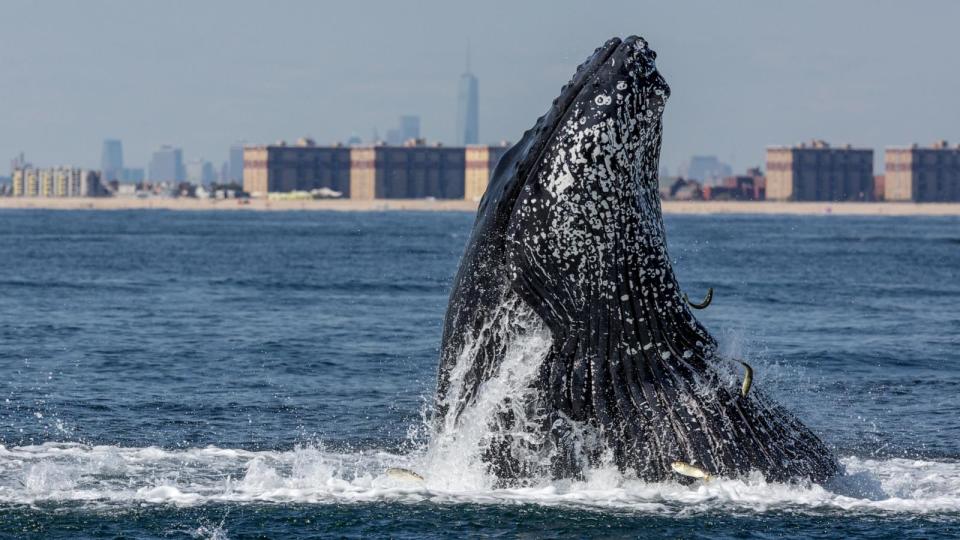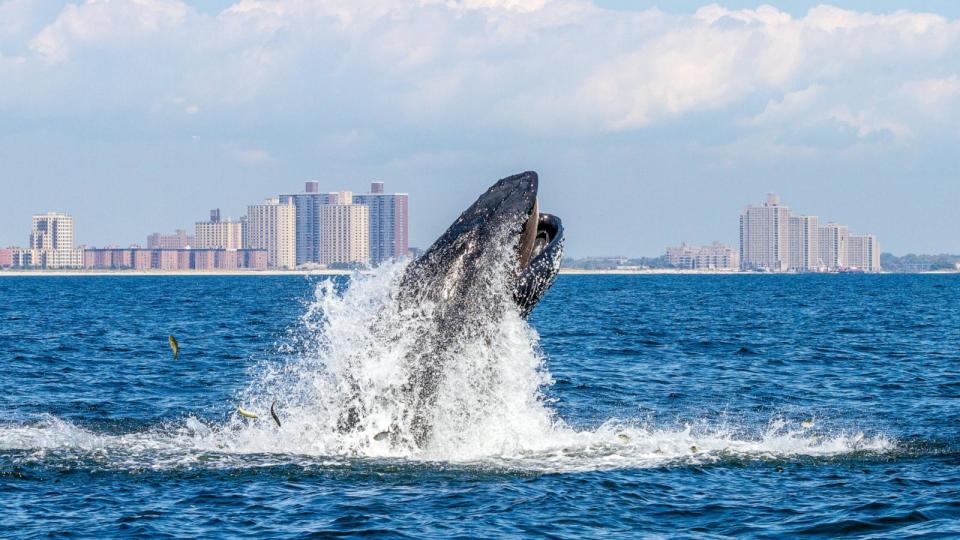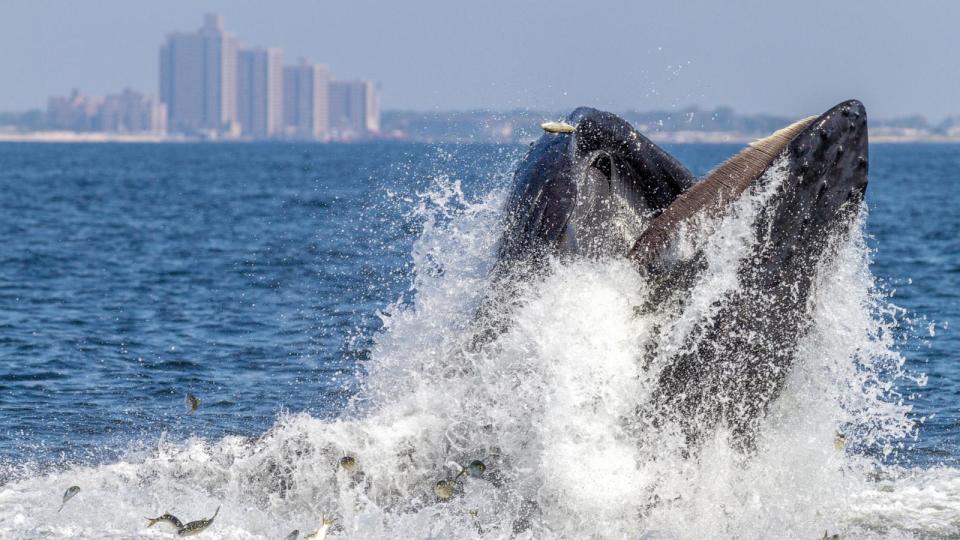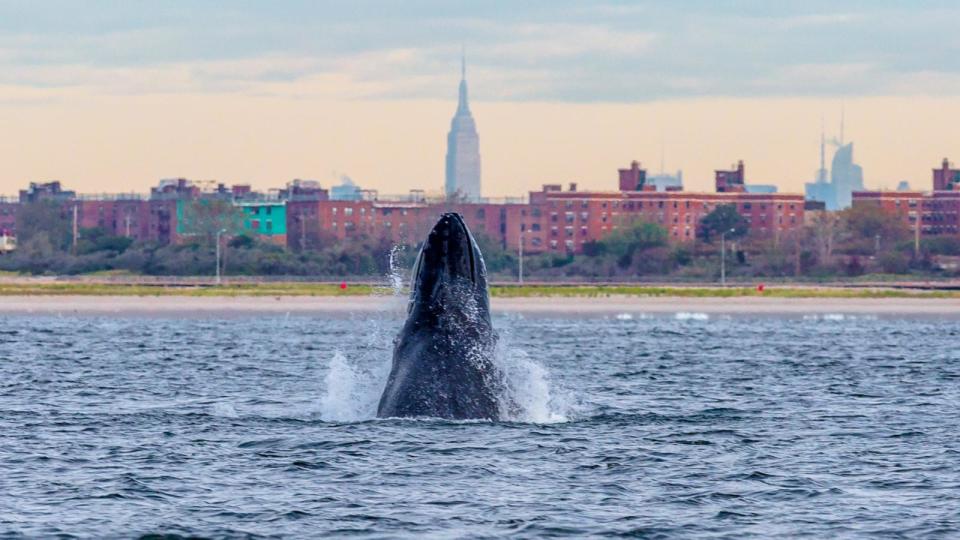Gotham Whale, a New York City-based nonprofit, allows citizen scientists to assist in conservation efforts
A whale-watching excursion that embarks straight from New York City offers passengers an opportunity to escape the hustle and bustle and assist in a much-needed conservation efforts for the marine mammal.
Gotham Whale, and research education and advocacy organization based in Staten Island, collects data of sightings from whale-watchers and boaters throughout the New York Bight, which includes the coasts of Long Island and New Jersey. Danielle Brown, director of marine mammal research for Gotham Whale and naturalist for Jersey Shore Whale Watch, told ABC News.
MORE: 'Incredibly rare' gray whale spotted 200 years after extinction from the Atlantic
The information is then entered into the nonprofit's catalog system, which helps to track and identity individual whales throughout their migration route each year.
Seven different whale-watching companies contribute information to the database, while the general public provides sightings to its citizen science program, the WANTED program, Brown said.

The citizen science entries -- whether from fishers, recreational boaters or beachgoers -- are among the most valuable, Brown said, adding that they often collect data in places where the whale-watching contributors don't go and where they don't expect whales to be.
Citizen scientists have reported whales swimming in the Raritan Bay in New Jersey -- near the Arthur Kill and close to the entrance of the Raritan River, Brown said. Sightings of the critically endangered North Atlantic right whale are also important, given how the population has dwindled to about 200 and 250 mature adults left in the wild, according to the International Union for Conservation of Nature's Red List of Threatened Species.
"There's also times when we may receive a sighting of a species such as a North Atlantic right whale outside of the timing when we expect them to be here, which again is extremely important for protecting them," Brown said.
The organization has the longest-running identification catalog of humpback whales that back been coming to the area, Celia Ackerman, research associate for Gotham Whale and naturalist for the American Princess, told ABC News.
Participants send the location, time, date and a photo of the whale to the database, and the researchers can tell if it's a whale they already know by its fluke, the pattern on their tails similar to fingerprints in humans.

The organization has been cataloging humpback whales since 2012, amassing 352 whales in its catalog to date, Brown said.
"We know that about half of them are whales that we see over and over again," she said.
MORE: How scientists discovered 7,000 humpback whale deaths using AI technology: Study
On April 20, Gotham Whale set sail for its first whale-watching outing of the season, aboard the American Princess, a 92-foot vessel designed specifically for whale-watching.
While conditions made a whale sighting likely, the spectators were delighted with a large nursing pod of bottlenose dolphins -- mothers and calves -- instead.

Humpback whales overwinter in the Caribbean before starting their migration route north in early April toward their major feeding grounds in Maine, eastern Canada, and both sides of Greenland, including Iceland and Norway, Ackerman said.
Whales that swim so close to urban areas could be at risk, making scientists especially interested in how they are using the waters in the region, Brown said.
MORE: Ocean scientists concerned over uptick of whale deaths on Northeast coasts
During the excursion, American Princess Captain Frank DeSantis cut the engines to fish a mylar balloon out of the water.
Decades ago, it was unheard of to see a whale in the polluted waters near the New York Bight, but conservation efforts such as the Clean Water Act and the Marine Mammal Act has brought the whales closer to shore, Paul Sieswerda, event coordinator for Gotham Whale told ABC News.

The mission of Gotham Whale, founded by Sieswerda's father, is to connect citizen scientists with the real scientists, he said.
Tickets for whale-watching excursions aboard the American Princess are $65 for adults, $60 for seniors, $45 for children 5 and older, Ackerman said.
Gotham Whale, a New York City-based nonprofit, allows citizen scientists to assist in conservation efforts originally appeared on abcnews.go.com

